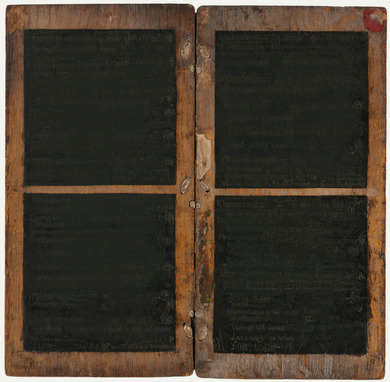Wax tablet with interest amounts on it
Wax tablet with interest amounts on it
These wooden memorandum books, coated on both sides with coloured beeswax, contain written entries detailing interest yields on monastic land, including vineyard properties, from 1360 until the middle of the 15th century. Wax tablets were an important written medium beginning in the Ancient Greek and Roman periods lasting until the Middle Ages.
Using the tip of a stylus, symbols were inscribed into the wax surface and then, where necessary, smoothed out or erased using the broad side of the tool. Also inscribed as smaller characters on the area of the girdle, they were used to record notes, bills and acted as a means of practicing one’s writing skills. They also served as a correspondence medium whereby the recipient of the tablet could immediately write a reply underneath the previous message and return the tablet to its sender. The piecing together of such tablets created the foundations for the codex manuscript format.

